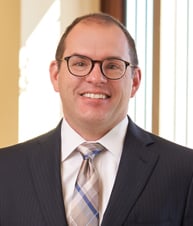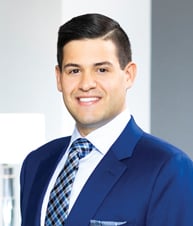Lynk Labs, Inc. v. Samsung Electronics Co., Ltd., No. 2023-2346 (Fed. Cir. (PTAB) Jan. 14, 2025). Opinion by Prost, joined by Lourie and Stark.
Samsung filed an IPR challenging a patent owned by Lynk Labs directed to light emitting diodes (LEDs) and LED drivers. Samsung’s grounds of unpatentability relied on a published patent application called “Martin,” which was filed before the challenged patent’s priority date but was published after that date.
Lynk Labs argued that Martin could not serve as prior art in the IPR because it was published after the challenged patent’s priority date. The Patent Trial and Appeal Board rejected that argument and, after resolving the parties’ claim construction disputes, found all challenged claims unpatentable as obvious over grounds that included Martin.
Lynk Labs appealed, arguing that Martin could not serve as prior art in the IPR and that the Board erred in construing two claim limitations.
The Federal Circuit affirmed. Addressing Martin’s availability as prior art, the court held that “the plain language of [35 U.S.C. §§] 311(b) and 102(e)(1) permits IPR challenges based upon published patent applications, and such published patent applications can be deemed prior art in IPRs as of their filing date.” The Federal Circuit explained that “the main problem with Lynk Labs’ argument is that, unlike § 102(a) or (b), and unlike books, articles, or other types of printed publications, Congress created—in § 102(e)(1)—a special rule for published patent applications.” And “under § 102(e)(1), even if a patent application was published after a claimed invention, it may serve as prior art to the invention if the application was filed before the invention.” Thus, the Board properly treated Martin as prior art.
The Federal Circuit next addressed Lynk Labs’ claim construction arguments. Relying on the intrinsic evidence, the court affirmed the Board’s constructions as well as the Board’s evaluations of the prior art, including Martin, under those constructions. Thus, the court upheld the determinations of unpatentability.
BearBox LLC v. Lancium LLC, et al., No. 2023-1922 (Fed. Cir. (D. Del.) Jan. 13, 2025). Opinion by Stoll, joined by Chen and Bryson.
Mr. Austin Storms founded BearBox to design and develop mobile cryptocurrency datacenters. Separately, Mr. Michael McNamara and Dr. Raymond Cline founded Lancium with the goal of co-locating flexible datacenters, such as Bitcoin miners, at windfarms to exploit the highly variable power output of windfarms.
In May 2019, Mr. Storms had dinner with Mr. McNamara and discussed the BearBox system. Later, the two exchanged text messages, and Mr. McNamara requested the BearBox design specifications, which Mr. Storms provided by email. They did not communicate further after the email. A few months later, Lancium filed a provisional patent application that ultimately issued as the ’433 patent, listing Mr. McNamara and Dr. Cline as the inventors.
BearBox learned of the patent and sued Lancium asserting claims of sole or joint inventorship of the patent and conversion under Louisiana state law. Lancium moved for summary judgment arguing that federal patent law preempts BearBox’s Louisiana state law conversion claim. The district court agreed and dismissed the conversion claim.
Lancium also moved for summary judgment as to BearBox’s sole or joint inventorship claims, but the court denied the motion and the claims proceeded to a bench trial. Before trial, the court struck a supplemental expert report by BearBox’s expert because BearBox had acted in bad faith by serving the report just before trial and five months after the close of expert discovery, without seeking leave of court or Lancium’s consent.
After the bench trial, the court ruled that BearBox had not established sole or joint inventorship of the ’433 patent. BearBox appealed.
The Federal Circuit first addressed whether federal patent law preempted BearBox’s Louisiana state law conversion claim. The Federal Circuit affirmed, agreeing with the district court “that BearBox’s conversion claim is preempted because the conversion claim, as pled, is essentially an inventorship cause of action and patent infringement cause of action, and thus seeks ‘patent-like protection’ for ideas that are unprotected under federal law.”
The Federal Circuit next determined that the district court did not abuse its discretion when it struck the supplemental report of BearBox’s expert. BearBox’s arguments rested on “a mistaken view of the record.” Also, contrary to BearBox’s argument that the supplemental report merely elaborated or clarified an earlier report, the district court did not err in concluding that the report offered new opinions. Lastly, the Federal Circuit saw no error in the district court’s analysis of BearBox’s bad faith in connection with the supplemental report.
Finally, the Federal Circuit upheld the district court’s conclusion that BearBox did not establish that Mr. Storms was either a sole or joint inventor of the ’433 patent. BearBox did not challenge any of the court’s factfindings or credibility determinations as clearly erroneous. Instead, BearBox argued that the court erred by excluding portions of Mr. Storms’ testimony as hearsay, analyzing individual claim elements by comparing them to Mr. Storms’ corroborating documents, and applying the rule of reason by evaluating corroborating documents in isolation. The Federal Circuit rejected each argument.

